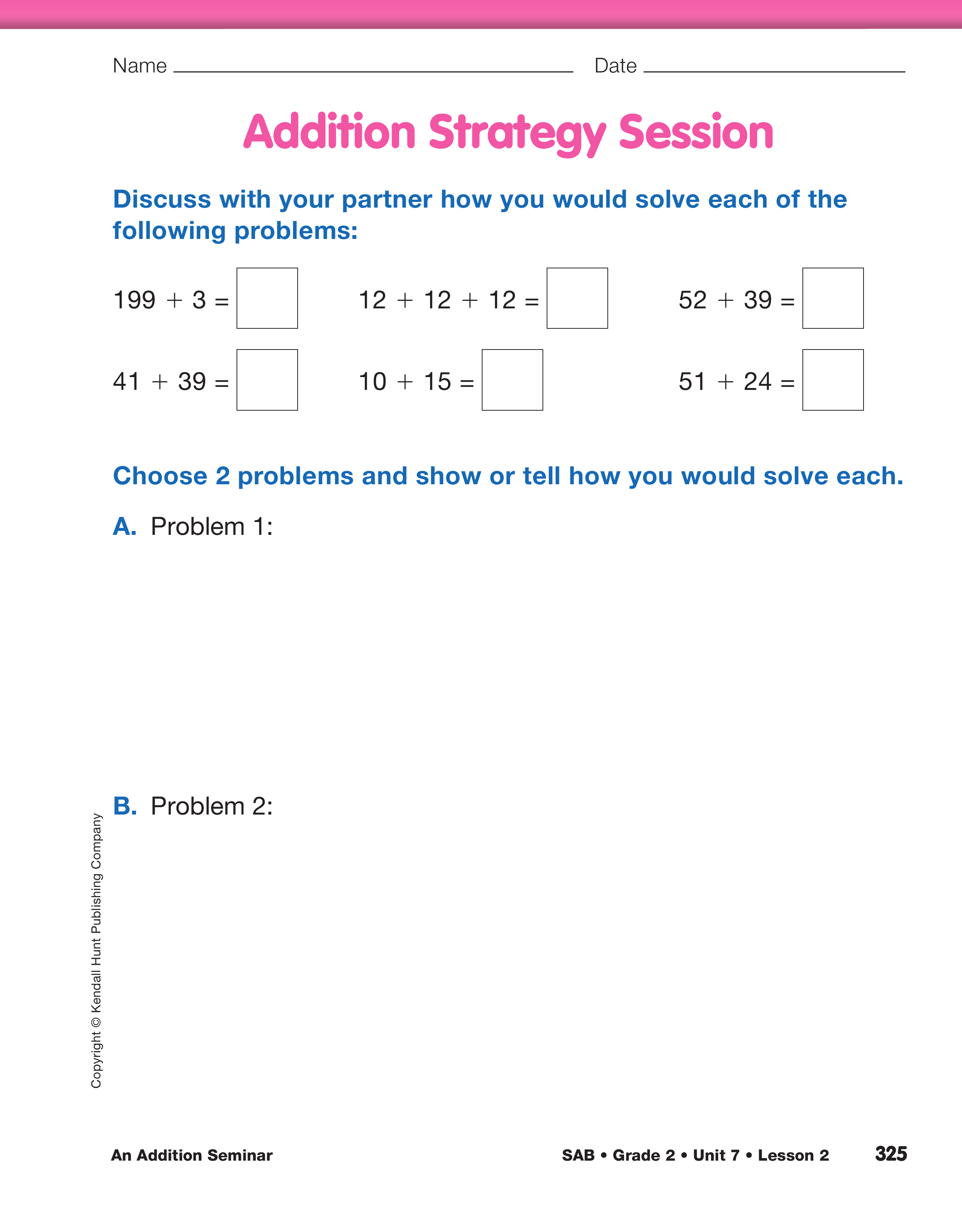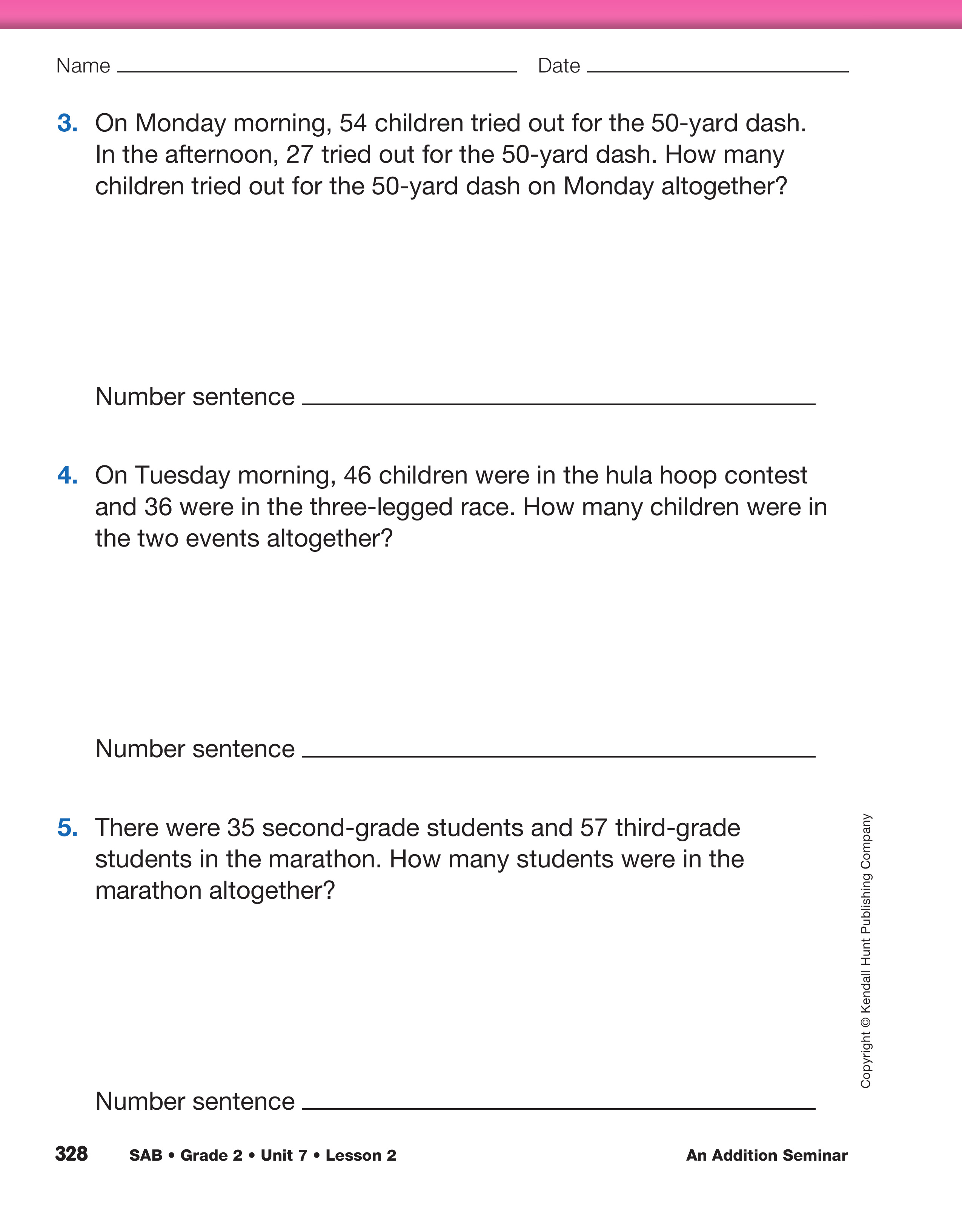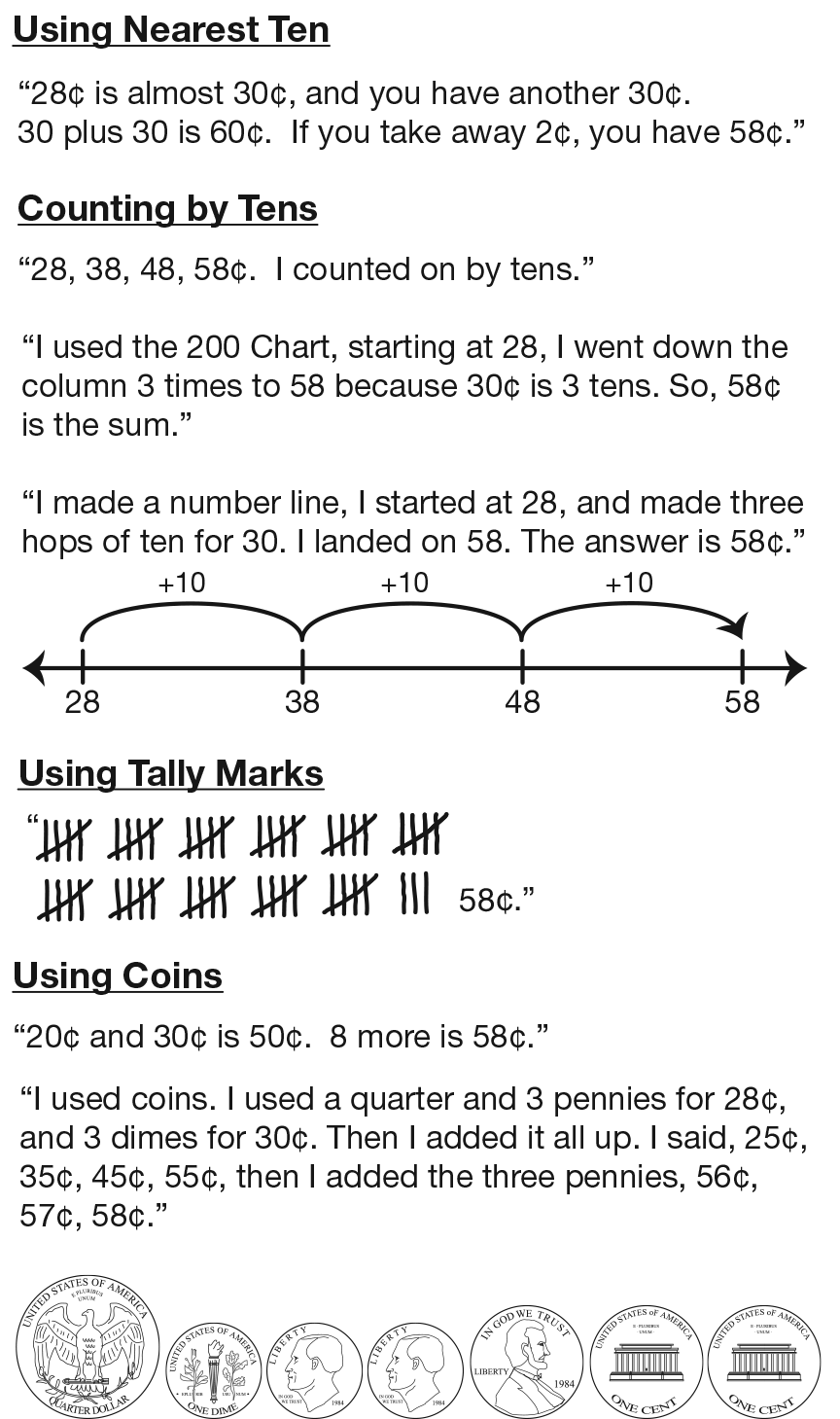An Addition Seminar
Est. Class Sessions: 2–3Developing the Lesson
Develop Invented Strategies for Addition. Begin the lesson by telling students that they are going to have a “strategy session” similar to the strategy session they had for addition facts with sums to 20 earlier in the school year. In this strategy session, they will solve addition problems with larger numbers and pay special attention to the strategies they use.
Introduce the problems on the Addition Strategy Session page in the Student Activity Book.
Say:
Have student pairs discuss strategies for solving each problem. Then have students select two of the problems and write their strategies for solving them. Explain to students that for each problem, they should show or explain how they solved the problem and not just name the tool they used. If students finish early, encourage them to think of more than one way to solve each problem.
After providing adequate time for students to work, select one problem at a time and ask student volunteers to demonstrate how they solved the problem. Have the prepared Number Line Display, a 200 Chart, base-ten pieces, and connecting cubes available for students to use as they describe their strategies.
Ask:
After a student has explained a strategy, identify it by that student’s name and record the strategy on a piece of chart paper labeled, “Addition Strategies Chart.” See The Naming Stategies Content Note. As you continue discussing strategies for other problems, ask students to solve the problem using one of the named strategies on the chart. See Figure 1 for a sample chart of invented strategies.
After students demonstrate their strategies and record them on the chart, ask questions similar to the following:
Help students to understand that a strategy that is efficient for one problem can be inefficient for another. For example, using counting on by ones is an efficient strategy for 199 + 3, but it is not an efficient strategy for 51 + 24.
Use Different Addition Strategies. Display the I Just Used My Head Master and the Addition Strategies Chart made earlier in the lesson. Ask students to choose two items to buy and use one of the strategies on the chart to solve the problem. Use the speech balloons to record the thinking of individual students and to list the strategies students use to solve the problems. Encourage students to develop other strategies as they work and add them to the new chart. Discuss whether each student’s answer is reasonable using estimation strategies from Lesson 1. For example, to estimate the sum of 28¢ + 30¢, students might use the friendly numbers 30 + 30 to estimate a sum of 60. See Figure 2 for some solution strategies that might be suggested for adding 28¢ and 30¢.
Choose two new items on the I Just Used My Head Master and repeat the process. Encourage students to try a strategy from the chart that they have not used before. Add any new strategies to the chart.
Compare the strategies by asking questions similar to the following:
Use Invented Strategies to Solve Word Problems. Have students complete the Olympic Field Day Problems in the Student Activity Book to provide further practice using strategies to solve addition problems. Tell students that a school had an Olympic Field Day and students competed in different activities on the school playground. Encourage students to use strategies on the Addition Strategies Chart or other reasonable strategies. Tools such as the number line, 200 Chart, connecting cubes, and base-ten pieces should be readily available.
Upon completion, have students share their solutions for each problem and add strategies that are not listed on the chart.




















